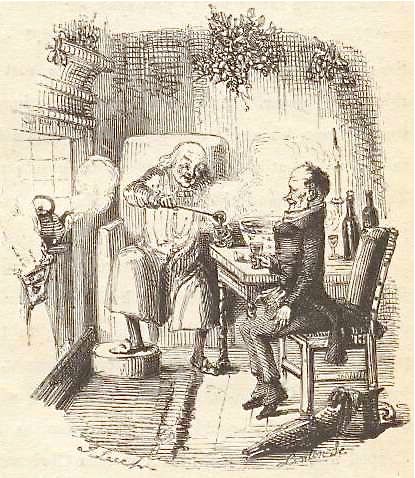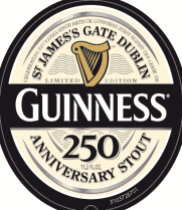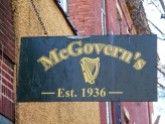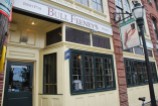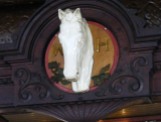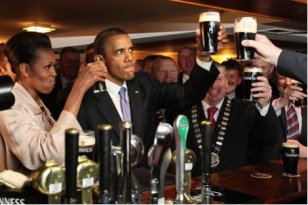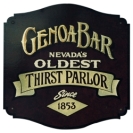
If you are wondering what might be in the super-secret Senate bill on revamping the nation’s healthcare system–wonder no more. For I am about to reveal the details based upon some recent personal input on the matter.
Knowing full well that the Senate would be tasked with coming up with something a bit less mean than what the House presented to the President, and also being aware of the fact that the Senate can be just as mean and nasty as the House, I took it upon myself to formulate my own blueprint for the overhaul of healthcare.
Now one might be tempted to question my credentials on the issue. But as a working bartender of almost 45 years, I have been at the forefront of practical medicine for most of my life. And I am certainly no less qualified than the majority of those senators and congressman that will ultimately decide the issue.
The following letter was emailed to the offices of key members of the United States Senate, including all those that currently sit on the Healthcare Committee:
To the Honorable and Reasonable Men and Women of the United States Senate:
While I do not have any accredited expertise on the issue of providing healthcare coverage to the citizens of this country, with each passing day it becomes increasingly self-evident that the democratic process allows even the least qualified among us to lay claim to having all the answers. So as someone who has at least served as an elected official in municipal government and has had the benefit or curse of having worn numerous professional hats along with a number of inconsequential caps over the course of 63 years, please bear with me as I toss my somewhat shopworn chapeau into the ring.
First off, it appears that both the previous and current administration, either by design or default, became mostly fixated on how to placate and finance the insurance industry. In spite of the fact that most Americans would probably place the blame for their premium woes on the perceived greed of the insurers, and while certain aspects of the customer service practices of these providers might help to fuel those perceptions—most of these companies operate at or below the average profit margins of the majority of all U.S. businesses. While there are probably some legislative actions, such as tort reform and creating larger insurance pools, which could lower premiums to some degree, the real savings is in addressing healthcare practices and the delivery of services. The question then becomes how do we rein in the costs of that which represents nearly 20 percent of the nation’s GDP without harming the overall health of the economy? And what should be the role of government in that process?
There are those that propose single payer universal healthcare, and there are those that would prefer a totally market-based solution. Without giving away my own personal preference, let me just say that neither approach is realistic under the current political climate. So as usual, it will require creativity, compromise, and consideration from both camps to bring about any meaningful change. So for what it’s worth, here are a number of ideas and observations to ponder.
1.) During the last few decades our country has experienced a rather baffling rise in both the cost of healthcare and higher education. I say baffling because neither situation has produced the improved outcomes that one might expect when measured against the cost. And when you factor in the information technologies available to both professions, the qualified practitioners of both medicine and learning should in fact be providing a much better product at a more equitable price.
I am not suggesting that those dedicated men and women on the front lines of either healthcare or education be paid less for their services, but I suspect there are a great deal of savings that lie just beyond the doors of the classroom and the operating room. And while the factors that drive costs in either institution do not necessarily make the case for a valid comparison—one only needs to take a stroll on the lush grounds of an Ivy League university or walk down the corridors of a sprawling hospital complex to know that both healing and enlightenment could be achieved in much more affordable surroundings. The question is, who will take the lead in the creation and construction of those surroundings—the government or the free market?
2.) In order for actual market based competition to occur within the healthcare industry, I believe two things must be addressed: the lack of transparency when it comes to actual costs, and the other being what I like to call “Car Wash Medicine.”
As to the latter, the recouping of one’s investment and eventual profitability in an automated car wash is dependent upon a never ending stream of dirty cars passing through the machine. Thankfully, the owners of these car washes can depend upon the vagaries of Mother Nature and the capricious hygiene habits of our winged friends to guarantee a healthy supply of customers. But this is not necessarily true in the business of healthcare. While all of us will eventually become sick or sustain injury, and perhaps even come to harm as the result of some chance encounter with a bird, the successful treatment of those maladies is not always dependent upon being subjected to the expensive technologies afforded to us by modern medicine. And yet it seems that no treatment regimen is complete without first being screened and scanned. I guess the medical community can’t afford to let that expensive CT or MRI machine sit idle for too long.
As to the matter of transparency, most of my time alive has been spent living in New Jersey. And while I can’t speak about oversight in the other 49 states, if the Garden State is a typical example of how healthcare providers operate throughout the country, then one must come to the conclusion that in fact there is no true market based competition going on. Depending upon the location, the same identical routine tests and procedures can vary in cost by thousands of dollars. And since those costs are most often negotiated under the cover of nondisclosure, the average consumer, who normally finds his way into the system by way of an ambulance with very little choice as to where to go, becomes doubly victimized by the unethical price fixing and price gouging that is being done all in the name of medicine.
3.) The repeal of the Affordable Care Act will most likely lead to another spike in the number of uninsured people seeking expensive emergency room treatment. Those who cannot afford insurance or preemptive medical care are left with little choice other than to wait for a symptom to become a sickness.
By developing an extensive national network of free or low cost government supported community clinics for poor and low income Americans, we could greatly reduce the number of emergency cases that have brought many of our hospitals to the brink of financial ruin. And as an incentive to attract qualified personnel to staff these clinics, the government could offer to pay for the cost of nursing or medical school in exchange for two years of service in those areas of the country that are underserved by the medical community. Considering the fact that the average new doctor finds him or herself with nearly two-hundred thousand dollars of student debt before they even see their first patient, I believe many of these newly trained professionals would gladly be willing to work for a bit less money at the beginning of their careers.
4.) We could be just one breakthrough away from freeing up $175 billion a year of government monies. Currently, approximately 18 percent of the annual Medicare and Medicaid budget is spent caring for people afflicted with Alzheimer’s and other forms of dementia. By 2025, that cost of care is estimated to reach $237 billion. While the Congress has already committed a substantial increase in research funding for this year’s budget, it is incumbent upon all of our elected representatives in both the House and Senate to guarantee that we will continue to aggressively fund those public and private entities that are engaged in the search for a cure. Other than the ravages of cancer, no other present medical condition has brought greater sadness or suffering to humanity than Alzheimer’s disease.
5.) Finally, it is safe to say that there will be an enormous amount of push back from those who might be adversely impacted by any attempt to control and cut the cost of healthcare. And certainly an industry that makes up such a large portion of our economy will strongly plead the case for maintaining the status quo when it comes to protecting the current model of medical care in the United States. But for the sake and wellbeing of those who represent the other 80 plus percent of our gross domestic product, now is the time for our leaders and legislators to exhibit a little more conviction and whole lot more courage!
Furthermore, as we begin the process of considering cutting taxes on both businesses and individuals in order to spur growth, we should not lose sight of the powerful boost to the American economy that would come about simply by reducing the undue financial burden of runaway healthcare costs. American companies would become more profitable, government would see increased tax revenue—but most importantly, our citizens would be less stressed, more secure, and a lot healthier. Because nothing promotes the general welfare of the people better than knowing that they will have the means to enjoy the rewards of life–and the resources to cover the cost!
Thank you for your time and attention.
Sincerely,
Christopher M. Poh
Of course there is that distinct possibility that in the process of amending and reconciliation that my recommendations will not be fully incorporated into the final bill. In the event of that outcome, I will prescribe the following in lieu of genuine reform and repair of our healthcare system:
- Get plenty of exercise. Lifting full pints of ale is a good start. Dancing on the bar is aerobic, but not recommended for older patrons.
- Socialize more. Take your eyes off the damn TV screen and engage in some constructive communication with the person next to you.
- Finally, take two aperitifs and call me in the morning–but, please, not too early!
Click glass  for additional treatment options.
for additional treatment options.
Posted by: Chris Poh for American Public House Review
